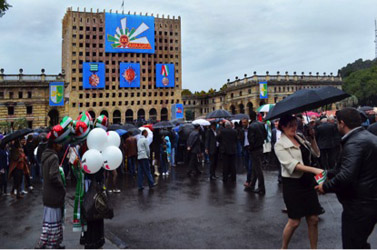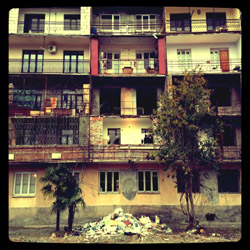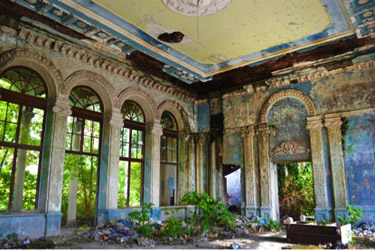Fieldwork in Republic of Abkhazia


 I have conducted my fieldwork in the “partially recognized” Republic of Abkhazia, studying the everyday processes of future-making engendered within such an ambiguous political status that operates between recognition of Russia, Venezuela, Nicaragua, Vanuatu, Nauru and non-recognition by the rest of international community. After the 1992-1993 war, at the end of which Abkhazia gained its de-facto independence from Georgia, followed a period of isolation (an economic and transportation blocked against Abkhazia) which started to be eased towards the end of the 2000s and was officially halted in 2008 shortly before the recognition by the Russian Federation. Since then Russian investment and development aid, accompanied by an increase in Russian tourism, have poured along the shores of the Abkhazian Black Sea (especially in the north-western side half of the country towards the border with Russia). I have been mainly based in Sukhum, the capital, and I have focused on how the lived experience of geopolitics is felt as an everyday intimacy at the interface between family-making, the touristic and hospitality market, political subjectivity and grassroots diplomacy, religious affiliation and belonging. I am particularly interested in analysing how Abkhazia as a way of life is produced at the intersection between individual and family aspiration, mobility trajectories, material environment, political discourses and imaginations of the future.
I have conducted my fieldwork in the “partially recognized” Republic of Abkhazia, studying the everyday processes of future-making engendered within such an ambiguous political status that operates between recognition of Russia, Venezuela, Nicaragua, Vanuatu, Nauru and non-recognition by the rest of international community. After the 1992-1993 war, at the end of which Abkhazia gained its de-facto independence from Georgia, followed a period of isolation (an economic and transportation blocked against Abkhazia) which started to be eased towards the end of the 2000s and was officially halted in 2008 shortly before the recognition by the Russian Federation. Since then Russian investment and development aid, accompanied by an increase in Russian tourism, have poured along the shores of the Abkhazian Black Sea (especially in the north-western side half of the country towards the border with Russia). I have been mainly based in Sukhum, the capital, and I have focused on how the lived experience of geopolitics is felt as an everyday intimacy at the interface between family-making, the touristic and hospitality market, political subjectivity and grassroots diplomacy, religious affiliation and belonging. I am particularly interested in analysing how Abkhazia as a way of life is produced at the intersection between individual and family aspiration, mobility trajectories, material environment, political discourses and imaginations of the future.
From top right:
The first picture shows Abkhazia celebrating its 20th Independence Day On 30th September 2013. The event commemorates the end of the war, known in Abkhazia as the liberation of Sukhum from the Georgian occupation (while in Georgia the same event is remembered as the fall of Sukhum and it is an official mourning day). The independence square, where the celebrations are taking place in Sukhum, is dominated by the burnt building of the Soviet Abkhaz government (functioning under the Georgian Soviet Socialist Republic), the highest and most visible building in the whole city.
The current post-recognition social dynamics read through the façade of an apartment building in Sukhum. One of the much complained about effects of the Russian investment money is a sharp sense of social differentiation, inequality and individualism, which having been an overwhelming feature of post-Soviet societies, had spared Abkhazia until recently as an effect of the post-war isolation.
A disbanded local train station in ruin in the old part of Gagra, a resort city established at the beginning of the 20th century as part of the Russian Empire, which acquired fame as a holiday paradise during the Soviet times. Only 20 km from the border with Russia, Gagra is currently the main destination for Russian tourists. A daily train Moscow-Sukhum (36 hours) stops in the main station of Gagra, but not in this one, which only attracts tourists in search of exotic photographic panoramas. For the locals the building brings back a mix of painful memories and anger about the war and the subsequent blockade, nostalgia for the good times of the Soviet Union but also hopeful wishes of Abkhazia becoming again a holiday paradise, this time with full international recognition.
